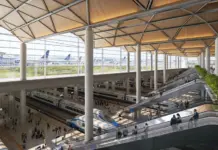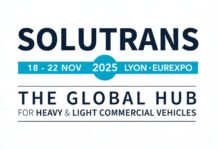Tackling congestion often seems like an unwinnable war but several cities have managed to make sizeable inroads. Here we profile a few of these schemes including congestion charges in Stockholm, Singapore’s area licensing scheme, Norway’s cordon charge and a bold e-car trading scheme in Paris. Frances Cook reports.
Stockholm’s successful congestion tax
With more than half a million cars travelling into the city on weekdays, a solution was needed to reduce Stockholm’s congestion.
Following a successful trial period in 2006, the city’s congestion tax system was rolled out in 2007. The reason for the tax was to reduce congestion and pollution with the revenue being used to build new road infrastructure in and around Stockholm.
According to ICT Trafikverket’s 2010 Annual Report, nearly 400,000 vehicles pass through the city’s 20 pay stations, between 6.30am and 6.29pm.
Payment is not made at control points, an invoice is sent to the registered address of the vehicle through automatic number plate recognition or it can be paid online or via direct debit. This is possible through a free-flow system using camera, laser and systems technology to detect and charge vehicles.
The system was designed and developed by IBM using optical character recognition (OCR) and there is also an RFID transponder that picks up a signal from the gate transceiver to capture the time, date and tax amount.
IBM reported not long after the 2006 trial that traffic was down 25%, emissions from road traffic were reduced by 14% and greenhouse gases fell by 40% overall – although a gradual increase in congestion may see the pricing rise in the future say recent newspaper reports.
Due to the success of Stockholm’s congestion charge, a similar scheme in Gothenburg will be rolled out in January 2013 using the same system.
The ERP from Singapore
The Singapore Electronic Road Pricing (ERP) scheme was introduced in 1998, as a replacement to the Area Licensing and Road Pricing schemes, to ease congestion and control journey times as well as promote car sharing and encourage use of public transport.
It works under a pay-as-you-use principle and was the first city in the world to use a toll system for congestion pricing. Using RFID technology motorists are automatically charged during operational hours.
The ERP system charges increase or decrease depending on the amount of usage of the road. This way congested stretches can be priced so that motorists consider alternative routes and help to encourage the best usage of the road network.
More than 70 ERP gantries are located at roads that link to the city’s central business district. Although unpopular to begin with the system has been responsible for a decrease in road traffic during peak hours and an increase of road speed and car-pooling. In a recent news report from Channel News Asia, the Minister of State for Transport Josephine Teo said average traffic speeds of 20 km/h increase to 30 km/h after the gantries are switched on.
Since its introduction, the ERP system has been effective at managing traffic congestion and resulted in improvements to traffic conditions. However, as congestion becomes more widespread it is not possible to keep erecting physical gantries and other technology is being considered, such as distance-based congestion charging.
Norway’s cordon charge
Bergen was home to Norway’s first toll road in 1986 and since then other cities, including its capital, Oslo (in 1990) and Norway’s third largest city, Trondheim (in 1991), have introduced automatic toll collection.
Bergen started to face congestion and a rising number of traffic accidents more than forty years ago. A study carried out by the Centre for Technology, Department of Design and Innovation, at The Open University, reports that the toll scheme has lessened traffic within the city (helped by parking charges being up to 20 times more than the toll charges) despite traffic in the region increasing.
Although the public were against the scheme when it was first introduced, opinions started to change when the results of the revenue were apparent in the new relief roads, motorways and tunnels.
Oslo followed suit about four years later with tolls aimed at reducing traffic flow and environmental problems. The city now has a classic cordon scheme with 19 toll stations circling Oslo’s city centre.
A case study from OSMOSE (Open Source for Mobile and Sustainable city), which is supported by the European Commission, reports that although traffic levels have not been majorly impacted, many new roads and public transport developments have been funded increasing road capacity.
Increased road standards and speed limits meant car travel is seen as more predictable and reliable, says a report by the Institute of Transport Economics in Oslo, and a 3-5% reduction in car traffic has been seen. Improvements to public transport have supported this development.
An Autopass system means drivers can pass through automatically and 60%, on average, use this method of payment. If drivers are not a member of the system the registration plate is photographed and the owner sent an invoice.
The Trondheim tolling project was completed not long after Oslo. Although business owners were originally against the idea as they feared it would drive customers out of the city centre, in actual fact the city centre was rejuvenated as a result, reports the Centre of Technology’s study, and retailer revenue rose as result of increasing numbers of visitors.
Paris’ blueprint for congestion-free cities
In December 2011 Paris launched the Autolib scheme, which runs in similar fashion to the city’s successful Velib programme where visitors rent bikes to travel around the city that can be picked up and dropped off at hundreds of different locations.
The pay-as-you-drive scheme is designed to cut traffic and reduce pollution as motorists choose to drive the 3.65 metres long, four-seater Bluecars, which were manufactured by Pininfarina for Bolloré, rather than their own diesel or petrol-fuelled vehicles. Vincent Bolloré has reportedly invested more than €100 million into the scheme.
The Bluecar runs on a LMP (Lithium Metal Polymer) battery and provides a range of 250km and a maximum speed of 130km/h. The scheme trialled in October with 66 cars in 33 charging stations and the mayor of Paris, Bertrand Delanoe, who is behind the Autolib project, plans to expand to 3,000 cars and 1,000 stations by the end of 2012.
The scheme will run across 46 communes in the ÃŽle-de-France. Users need a driving licence and passport or ID card plus a credit card and on booking are issued with a validated RFID badge, which unlocks the Bluecar. A range of rates are offered from a year’s subscription at €144 to a daily rate of €10.
According to a study published in 2010 by Chronos TNS Sofres, a quarter of French citizens have already cut back or stopped using their cars as a result of increasing insurance and parking costs. Add spiralling congestion and fuel prices to the mix and Bolloré could find that his sizeable investment will be worth every penny.











